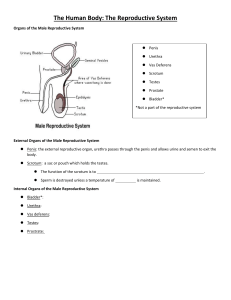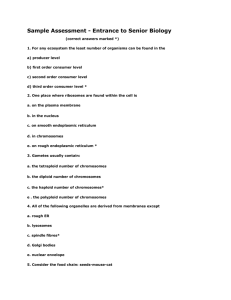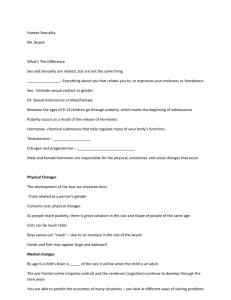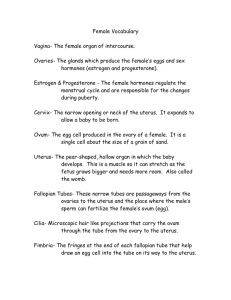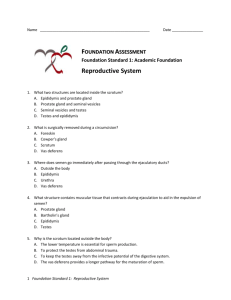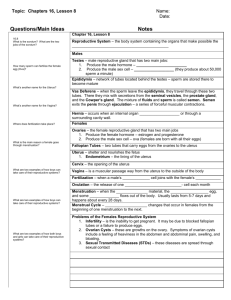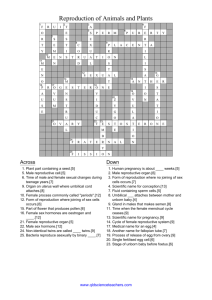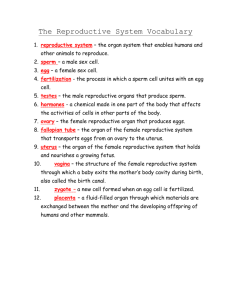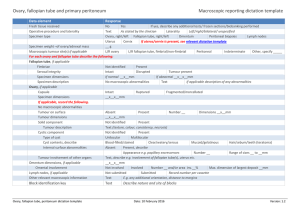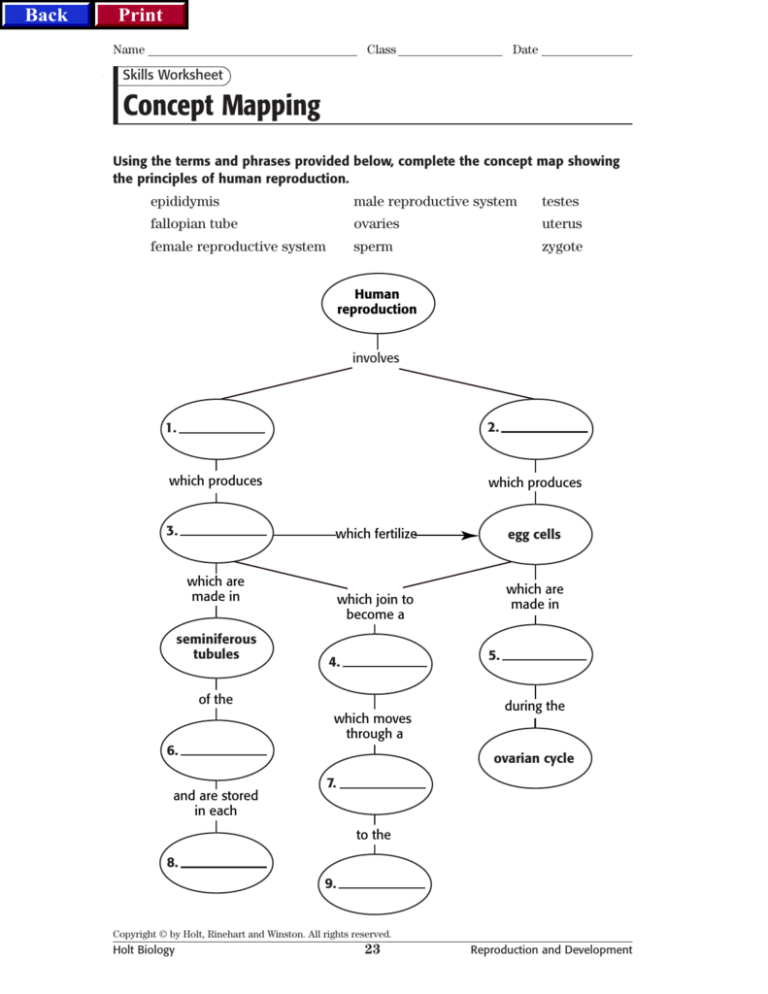
Back
Print
Name
Class
Date
Skills Worksheet
Concept Mapping
Using the terms and phrases provided below, complete the concept map showing
the principles of human reproduction.
epididymis
male reproductive system
testes
fallopian tube
ovaries
uterus
female reproductive system
sperm
zygote
Human
reproduction
involves
2.
1.
which produces
3.
which produces
which fertilize
which are
made in
seminiferous
tubules
which are
made in
which join to
become a
5.
4.
of the
which moves
through a
6.
and are stored
in each
egg cells
during the
ovarian cycle
7.
to the
8.
9.
Copyright © by Holt, Rinehart and Winston. All rights reserved.
Holt Biology
23
Reproduction and Development
Back
Print
TEACHER RESOURCE PAGE
5. The testes form inside the abdominal
10.
11.
12.
13.
14.
15.
16.
17.
18.
19.
20.
21.
22.
23.
24.
25.
26.
27.
28.
29.
30.
31.
32.
33.
cavity and then move down into the
scrotum either before or shortly after
birth.
6. The temperature in the scrotum is
about 3°C lower than it is in the rest of
the body. This is a suitable temperature for sperm to complete development.
7. c
SECTION: FEMALE REPRODUCTIVE
SYSTEM
1. about every 28 days
2. a passageway through which an ovum
moves from an ovary toward the
uterus
3. rhythmic contractions of smooth muscles that line a fallopian tube
4. a
SECTION: DEVELOPMENT
1.
2.
3.
4.
5.
6.
7.
8.
9.
10.
5
3
6
2
4
7
1
a fallopian tube
a diploid cell called a zygote
b
Science Skills
ANALYZING DATA
1. approximately Day 13
2. approximately Day 13
3. The highest level of luteinizing hor-
mone signals the release of the egg
around the 14th day of the cycle.
SECTION: SEXUALLY TRANSMITTED
DISEASES
Concept Mapping
1. Because viruses, which cause STDs,
1.
2.
3.
4.
5.
6.
7.
8.
9.
are not affected by antibiotics, viral
STDs cannot be treated by such
medications.
2. Both AIDS and genital herpes are
transmitted through sexual contact.
3. a
Vocabulary Review
1.
2.
3.
4.
5.
6.
7.
8.
9.
b
g
c
f
d
a
e
h
ovulation
ovaries
ovarian cycle
ovum
corpus luteum
follicle
uterus
menstruation
vagina
fallopian tube
menstrual cycle
gonorrhea
syphilis
chlamydia
pelvic inflammatory disease
genital herpes
seminal vesicles
vas deferens
testes
prostate gland
semen
bulbourethral glands
seminiferous tubules
penis
epididymis
male reproductive system
female reproductive system
sperm
zygote
ovaries
testes
fallopian tube
epididymis
uterus
Copyright © by Holt, Rinehart and Winston. All rights reserved.
Holt Biology
73
Reproduction and Development

